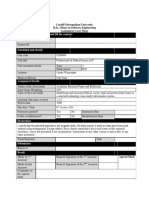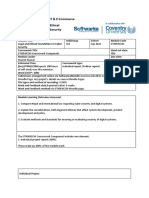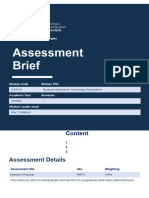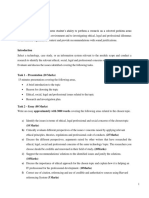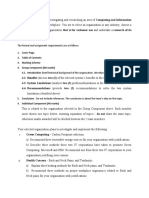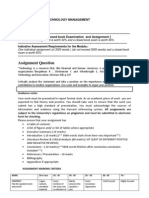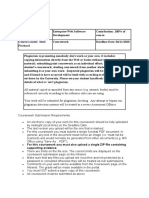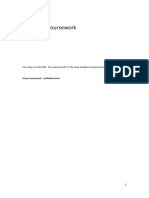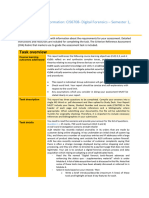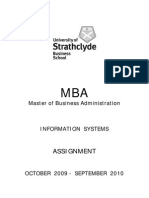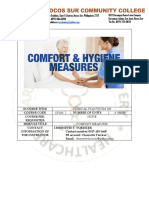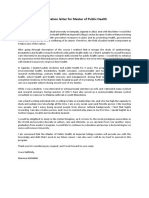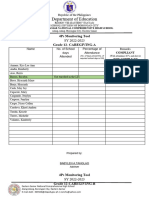0% found this document useful (0 votes)
123 views6 pagesAssignment 2 - Critical Writing: Objective
This document provides instructions for Assignment 2 of the IT5010 - Advanced Learning and Study Skills course. The objective of the assignment is to assess students' academic writing skills. Students must select one of several topics, research it, and submit a 1,500 word written report. The report should include an introduction to the topic, evaluation of the topic, and conclusions. Students will submit an initial draft to peers for feedback and a final version to the instructor by the specified deadline. Late submissions will not be marked and plagiarism is subject to penalty.
Uploaded by
fixin liteCopyright
© © All Rights Reserved
We take content rights seriously. If you suspect this is your content, claim it here.
Available Formats
Download as PDF, TXT or read online on Scribd
0% found this document useful (0 votes)
123 views6 pagesAssignment 2 - Critical Writing: Objective
This document provides instructions for Assignment 2 of the IT5010 - Advanced Learning and Study Skills course. The objective of the assignment is to assess students' academic writing skills. Students must select one of several topics, research it, and submit a 1,500 word written report. The report should include an introduction to the topic, evaluation of the topic, and conclusions. Students will submit an initial draft to peers for feedback and a final version to the instructor by the specified deadline. Late submissions will not be marked and plagiarism is subject to penalty.
Uploaded by
fixin liteCopyright
© © All Rights Reserved
We take content rights seriously. If you suspect this is your content, claim it here.
Available Formats
Download as PDF, TXT or read online on Scribd
/ 6

